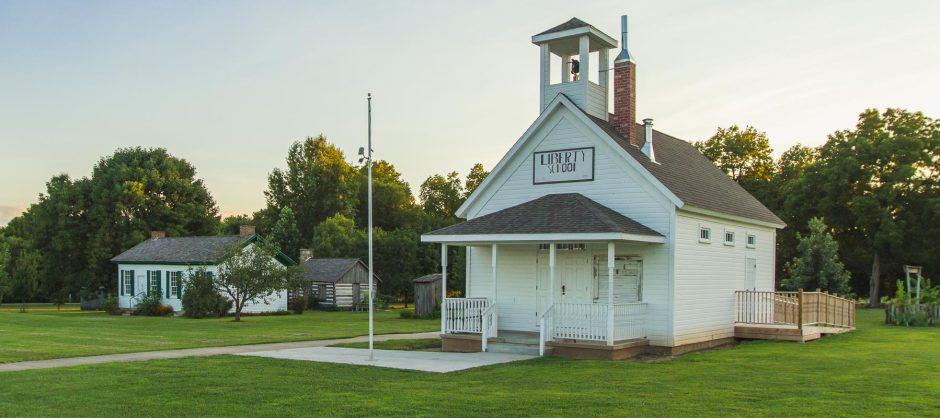John Polk (1804-1852) and Louisa Campbell (1820-1866)
Considered the founder of Springfield, MO, John Polk Campbell was born in Mecklenburg, NC, and later moved to Maury County, Tennessee. He and his brother Madison came to this area in 1829. The story is recorded by Louisa Cheairs McKenny Sheppard, granddaughter of John Polk Campbell in her journal compiled in the book A Confederate Girlhood.
“On their outward trip, the two brothers lost their way and when night fell they had no idea where they were; but as they were stumbling on in the darkness, seeking a suitable camping place, they happened on an Indian village where they were received with grave kindness. It soon transpired that one of the young Indians was very ill. An old chief led the two white boys to the tepee where the sick lad lay and made them understand that they were to cure him. With all the assurance of youth, they undertook the task, using the medical supplies and herbs provided by their mother for their trip.”
The story continues to say that in return for helping the young man recover, the Kickapoo Chieftain rewarded John with a plot of land containing a spring. This land later became the beginning of Springfield, MO.
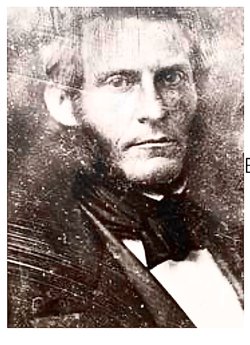
Founder of Springfield
In a publication entitled, “History and Directory of Springfield and North Springfield”, compiled and published by George S. Escott, it is written that this land containing the Fulbright Spring and a natural well is where John P Campbell carved his initials in a tree marking his land. He returned to Tennessee for his wife and daughter and headed back to the Kickapoo Prairie in 1830. Mr. Campbell’s family traveled with his brother-in-law’s family and six slaves. They returned to find that Billy Fulbright and his brother John Fulbright had already begun building cabins on this land. Since John had a longer-standing claim, proven by his initials in the tree, the land and cabins were forfeited to him. His original land claim, recorded April 10, 1843, is bounded approximately by the modern streets of Mill Street on the north, Holland Avenue on the east, Cherry Street on the south, and Campbell Avenue on the west. He later donated 50 acres to become the beginning of their new town. Springfield was incorporated in 1838 with a then population of 500 residents living there.
According to his daughter, Sarah, John left his home at the age of thirteen to be educated in Mecklenburg, NC. While attending school he lived for a short time with descendants of Gen. Nathanael Greene. In 1833 Greene County was established and John was responsible for the county being named after the admired general. John P Campbell became the first county clerk and his home served as the first county courthouse.
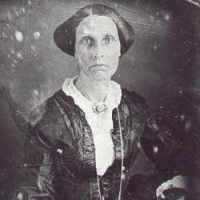
John donated land for the forming of Springfield and helped to design the layout of the town. John and his wife, Louisa (1810-1866) had ten children who lived to adulthood. Their children were: Tabitha Caroline, Mary Frances, John Nathaniel, Leonidas Adolphus, Sarah Rush, James Cheaires, Thomas Polk, Samuel Independence, Constantine, and William Argyll. Three other sons, Jack, Thomas, and Rush died in infancy. Their second child Mary Frances born in 1831, was the first white female born in the area. John was described as having light brown curly hair and a fair complexion. His 6-foot-2-inch frame towered over others. Louisa is also described as remarkably tall, with dark hair and fine eyes.
After establishing Springfield, John explored new territories in Texas and present-day Oklahoma. He died in 1852 in Oil Springs, Cherokee Nation.
The remaining Campbell families lived in Springfield until the onset of the Civil War. Being slave owners and southern sympathizers they were supporters of the Confederacy. Once Springfield was secured by Union forces the Campbells were forced to move their families to Mississippi and Tennessee. Four of the Campbell’s sons fought in the Civil War with two of them, Thomas P. and John N. dying as a result. Leonidas and Samuel survived. Louisa and Sarah Rush returned to Springfield with hopes of restoring their family home. Louisa died in 1866.
Junius T. (1812-1877) and May A, Blackwell (1814-1893) Campbell
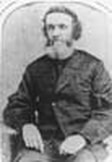
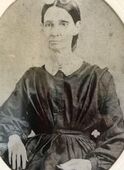
Junius T. Campbell, from Tennessee, moved to Springfield, MO in 1831. He started his eight-year business by opening the first mercantile for the town. The opening of this store also began commerce for the little log cabin community. It wasn’t long before more stores, mills, a school, a post office, and other businesses started operating. In 1832, the community celebrated one of the first wedding ceremonies when Junius married Mary A. Blackwell. The two were parents of 14 children including John P. Campbell, former owner of the Gray/Campbell farmstead home.
Mr. Campbell held many prominent positions in Springfield. Between 1836 and 1855 he was the Justice of the Peace (although he only worked one case before resigning), County Treasurer, Postmaster, and County Sheriff. In 1876, Junius was the president of the Old Settlers’ Association.
John Polk (1835-1878) and Susan E. Gray (1837-1923) Campbell
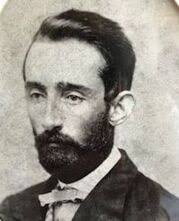
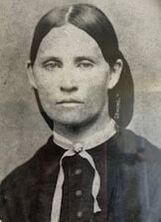
One of eleven children of Junius Tennessee Campbell and Mary A. Blackwell Campbell. John P Campbell was born in Springfield, MO in 1835. While he attended school in Springfield and later in Fayetteville, MO, most of his education came from learning to clear and farm the land with his father. John was the nephew and namesake of the founder of Springfield, MO. John married Susan Elizabeth Gray in 1857. They had ten children including, Mary Frances, Richard Huntley, John P. Jr., Junius E., Robert Bruce, and Russell Vinton. John purchased the home belonging to his brother-in-law James P. Gray. He began successful farming there until his death in 1878. John’s daughter Mary Frances married Charles W. Doling another prominent Springfield citizen with whose family Doling Park is named.
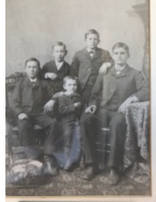
Sarah Rush Campbell Owen (1837-1925)
Sarah Rush was the seventh child of John Polk Campbell and Louisa Terrell Cheaires Campbell. She married Jabez Owen (1831-1862) in March of 1855. She and Jabez lived in Texas in 1861 at the onset of the Civil War. She returned to Greene County, MO as a widow in 1869 and stayed until she died in 1925. Sarah and Jabez had at least four children, two girls and two boys.
Pictured to the right is Sarah and her brother Leonidas. Leonidas fought for the Confederacy during the Civil War.
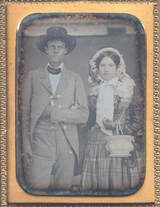
Louisa “Lulu” Cheairs McKenny Sheppard (1848-1931)
Louisa “Lulu” Cheairs McKenny Shepard a granddaughter of John Polk and Lousia Campbell. Her mother was the Campbell’s first child, Tabitha Campbell McKenny. Tabitha died during Lulu’s birth and subsequently, she was raised by her grandmother.
In later years Lulu wrote A Confederate Girlhood, as a memoir and tribute to her grandmother. In the recollection, she writes of her experiences at the beginning of the Civil War in Springfield, MO.
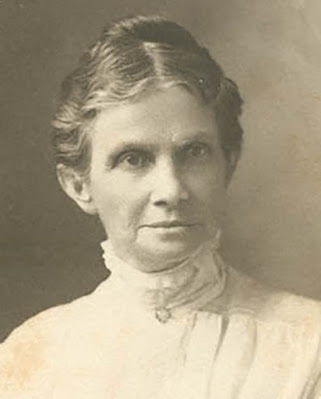
The day before the Battle of Wilson’s Creek, Mother (was told) General Lyon and some of his staff (were coming) to dinner. She agreed and at once saw to the preparation of one of those dinners for which she was famous. General Lyon was a rough looking man with good manners. He sat at Mother’s right and opposite to me. During dinner he raised his wine glass to Mother, and said, “Madam, you wish us success?” “Sir,” she answered with grave dignity, “I am a Southern woman.” He looked at her with utter amazement, then said, “And you have sons in the Confederacy?” … “Four,”(she replied) and then with a sudden flash of spirit, “and I wish they were fifty and I were leading them.”…General Lyon arose and took her hand as he said, “I hope no trouble is at hand for so brave a woman.” He was killed the next day…
Louisa Cheairs McKenny Sheppard – A Confederate Girlhood
Lulu relocated to Mississippi and later Arkansas during the American Civil War. After the war, Lulu attended a Catholic Boarding school in St. Louis. She returned to Springfield in 1869 and married a friend of her uncle.
